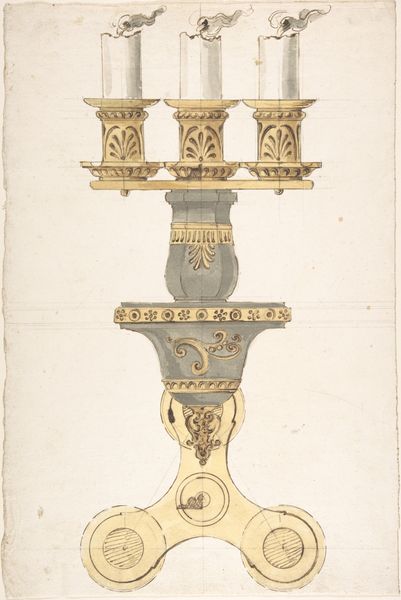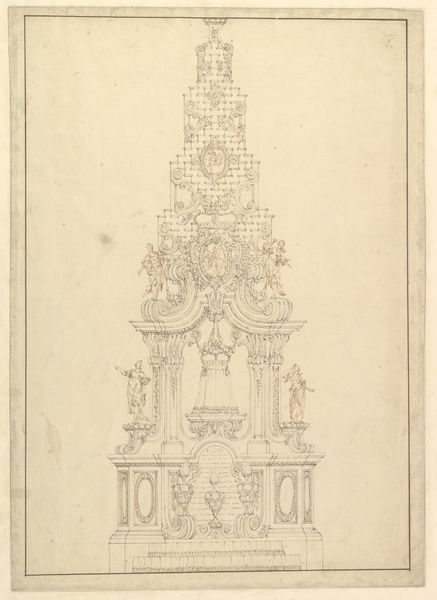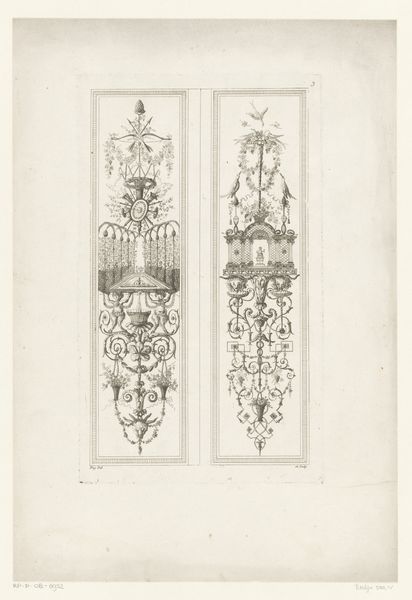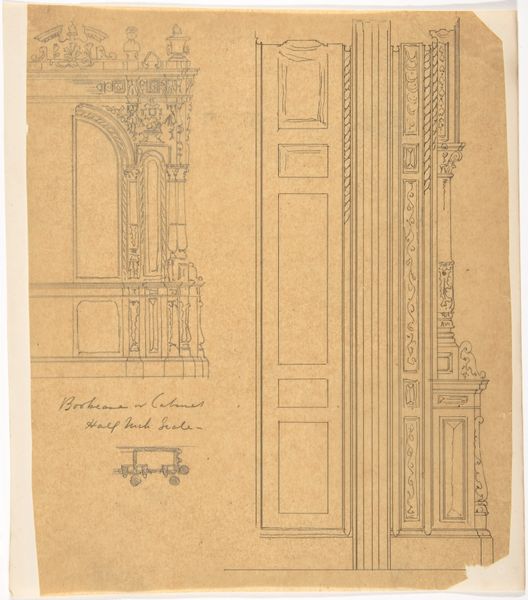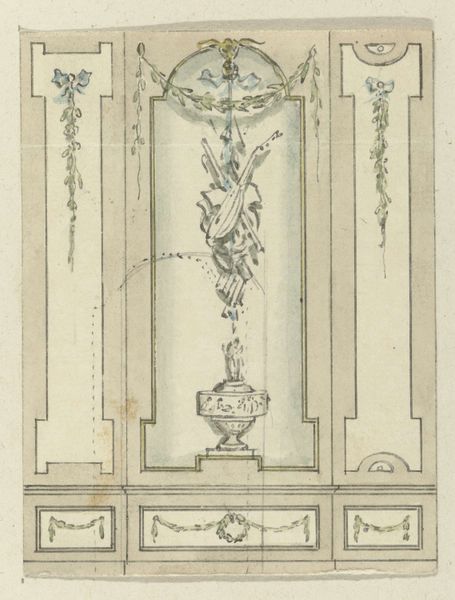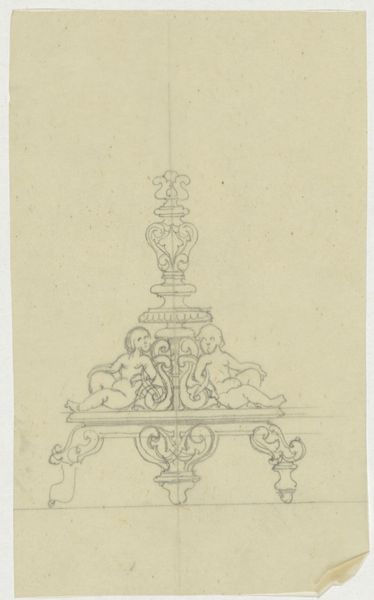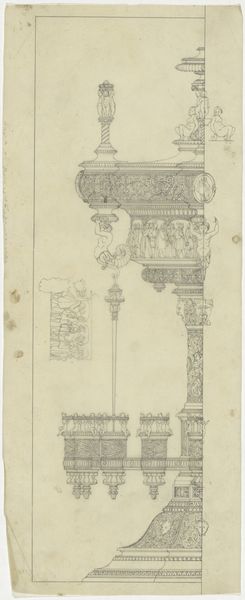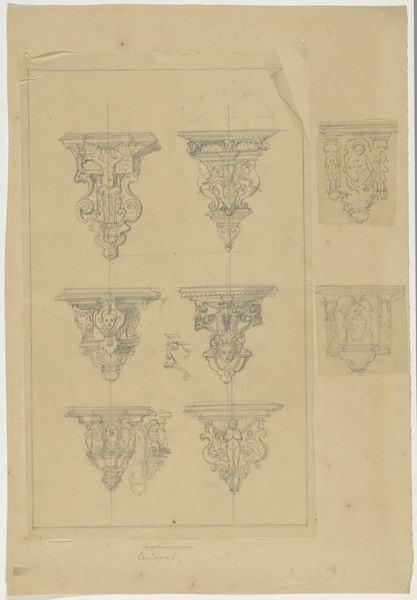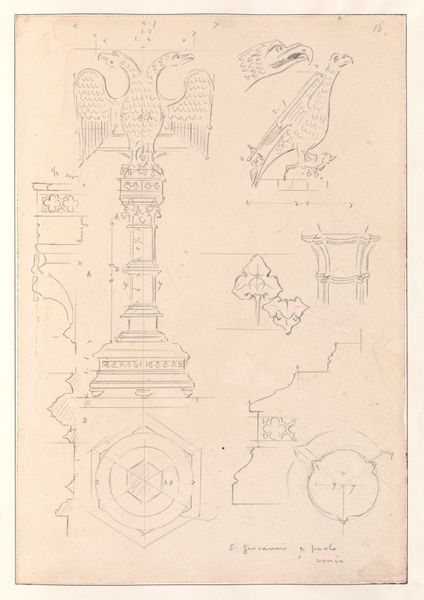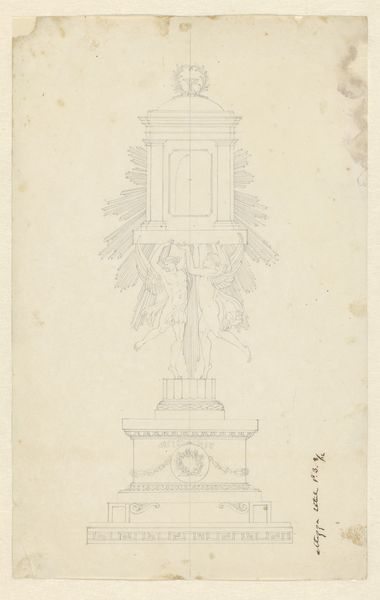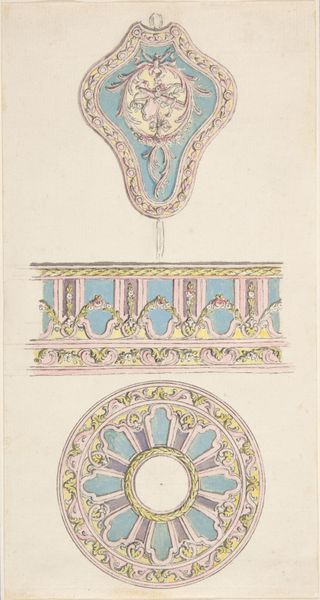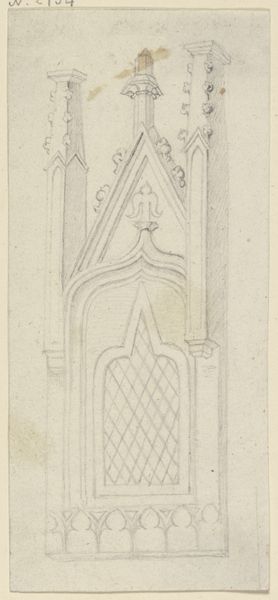
drawing, mixed-media, paper, watercolor, ink
#
drawing
#
mixed-media
#
paper
#
watercolor
#
ink
#
geometric
#
orientalism
#
decorative-art
Dimensions: height 236 mm, width 160 mm
Copyright: Rijks Museum: Open Domain
Curator: What a fascinating study! I am immediately drawn to the intricate detailing and geometric rhythm. Editor: Indeed. We’re looking at a mixed-media drawing on paper attributed to Plácido Zuloaga, circa 1870-1880. The piece is titled "Vijf wandelstokknoppen van gedamascineerd ijzer", depicting five designs for walking stick handles made with damascened iron, executed with ink and watercolor. Curator: The use of ink and watercolor grants a translucent quality to the ornate patterns. The meticulous draftsmanship reflects an intense engagement with ornament, characteristic of Orientalism in decorative arts. I appreciate the subtle gradation that defines each element. Editor: Right. Orientalism in this period fueled production across artistic disciplines; it provided source imagery for new forms of design intended for consumers. Zuloaga's family were gunsmiths and metalworkers of high reputation—they furnished arms to Spanish royalty, and later established factories to mass-produce luxury objects. This design may represent their response to changing demands and broader consumer appetites. Curator: Interesting. Beyond the socio-historical context, it is important to stress the beauty and control. The lines suggest an inherent balance that could stem from classicism rather than ‘Orientalism.’ And the artist uses a restricted color palette that contributes to its elegance. Editor: Yes, the artist is definitely aiming for elegance, as he markets new luxury objects by means of new design forms. Yet, I'm wary about dismissing Orientalism entirely in its broader art history context, the political dimensions of which arguably impacted the way certain techniques were implemented during this period. The artist wasn’t necessarily separated from the political undercurrents and societal movements occurring during this era, and as a result, may have been influenced by Orientalism whether consciously or subconsciously. Curator: Perhaps. Although my concern resides primarily in the formal properties visible, which strike a concord, balance and refined elegance which would be attractive for any style or patron, and remain in isolation from history. Editor: A valid consideration. Regardless, it prompts interesting points about the relationship between craft, industrialization, and art in 19th-century Europe. Curator: Agreed. These intricate geometries serve to showcase the skill of an artisan reflecting historical and cultural influences of an intriguing time. Editor: Yes, I've enjoyed examining those complex artistic forces.
Comments
No comments
Be the first to comment and join the conversation on the ultimate creative platform.
